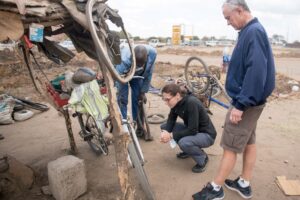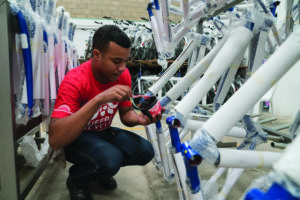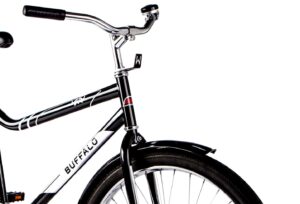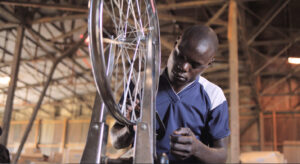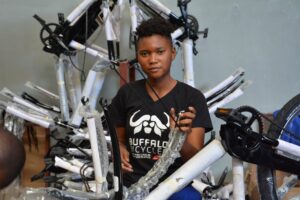Q: How do you determine what to develop and change on the bicycle?
A: All decisions are driven by user needs. Now, that’s kind of a broad statement because users have a lot of different needs, and bikes have many uses. Essentially, we aim to offer something robust that more people can use in more places.
Our team has a tagline: “More distance in less time, more load with less effort.”
One place we mine for fertile development ideas is our testing program. We have an incredible team of test riders that provide priceless insights to build upon. Some of these riders have been working with us for over a decade – like Jackton.
Our test riders really put products to the test by exposing components to environments we can’t recreate in a lab setting. Their usage of the bike is different enough from the mass market that standard industry tests often don’t identify the “real-world” problems our markets face. The loads, distances, and conditions the test riders tackle daily allow us to accelerate the life cycle and help clarify where to prioritize our product development efforts.
Q: What are some of the major changes that have been made since the original Buffalo Bicycle?
Gosh, that’s hard to answer. I’d have to say it is the myriad small improvements and attention to detail that differentiate the Buffalo from other bikes available in its market. One major change, like frame geometry, may stand out as visually obvious, but it’s not necessarily more important than some of the less conspicuous improvements.
Take the saddle, for example. Bikes spend hours outside in the harsh African sun, and most saddles eventually disintegrate. After careful material development and testing, the current Buffalo saddle far outperforms the competition; it not only maintains function – it’s also quite comfortable.
Some might not consider that a “major” improvement, but if you’ve ever tried to ride a bike any distance with a deficient saddle … you’d probably disagree!
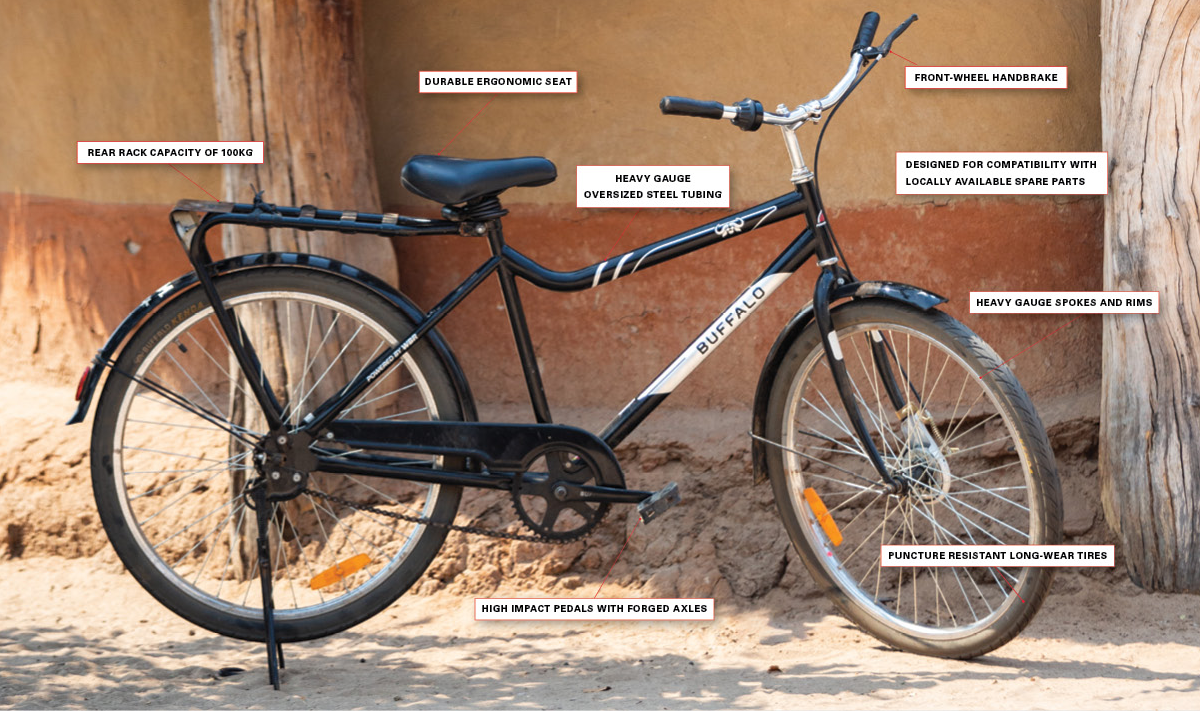
Q: Are the Buffalo’s components off-the-shelf or custom-designed?
A: The original Buffalo was born when FK Day drafted a spec of existing bike components with conscious intent to fill a need that wasn’t being met. Once established, the supply chain began working with suppliers of those components to make incremental quality improvements – a great example of how sharing industry experience can influence products that previously received little-to-no attention.
With strengthened supplier relationships came the opportunity for further improvements and custom modifications. That evolution has built both a bike and brand that is now recognized as a gold standard for utility.
Now we’ve set our sights on the next logical step – further leveraging industry knowledge and relationships to generate truly new products and proprietary designs to fulfill user needs.
Q: What are the craziest ideas you’ve considered?
A: Here’s the thing. Any “crazy” idea has probably been done before.
Bikes have been around since the early 19th century. So when you think you’ve got a new idea, it’s probably something that’s already been done before.
Q: What are you working on right now?
A: We can’t spill all of our secrets. But let’s just say that we’ve got some exciting things coming your way soon.
